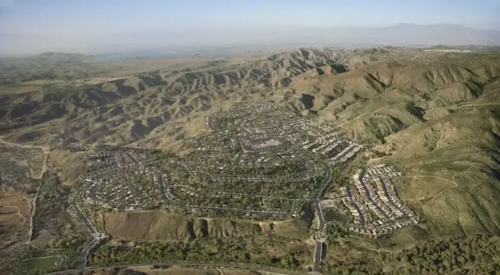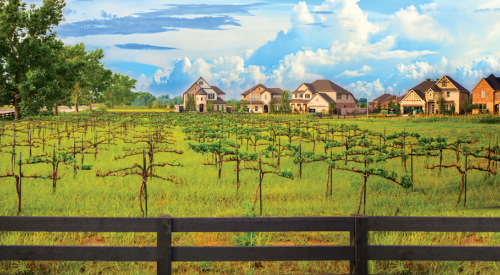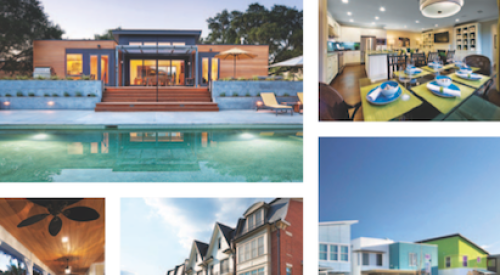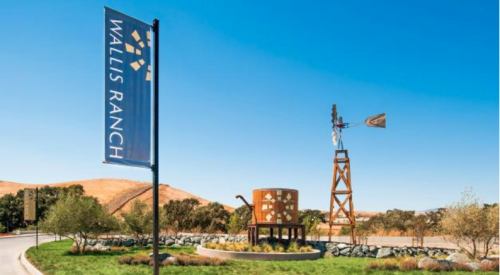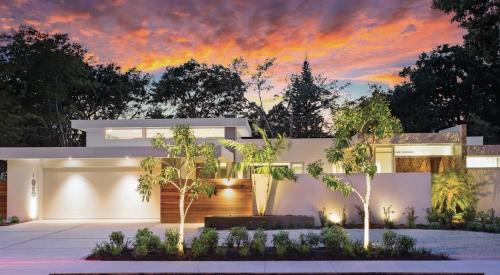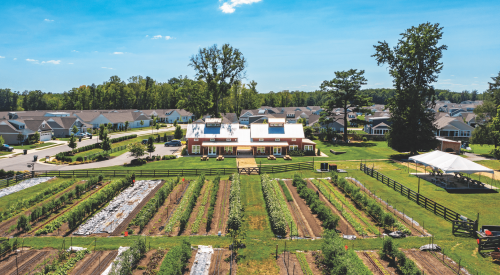 |
|||||||||||||||||||||||||
|
This city took the Reston, Va., model a step further by creating community centers and recreational amenities as epicenters for community identity and pride.
|
|||||||||||||||||||||||||
 |
|||||||||||||||||||||||||
|
|
|||||||||||||||||||||||||
In some ways, development of Mission Viejo in southern Orange County, California didn't seem to break new physical development ground. Yet, it offered an aggressive design concept at the residential lot scale, with housing offering appealing indoor/outdoor design connections that benefited from the area's temperate Mediterranean climate. The community's aggressive grading, an approach to suburbanizing the hill and valley terrain, was tempered by lush landscaping and pleasant streetscapes.
Mission Viejo captured a market of middle-income families exiting Los Angeles, offering homes priced from $23,000. Located on 11,000 acres of the 53,000 acre Mission Viejo Ranch, the community was arranged around a 50-acre Village Center, with 13 localized neighborhood retail centers and a freeway-close regional mall located on the community's periphery.
But the genius of the Mission Viejo Company (the developer of the community) lay in its unprecedented program for building community identity and pride by creating a world class swimming facility and program. The Nadadores, Mission Viejo's record-setting swim team, dominated Olympic swimming for many years. Some of the best swim coaches in the Nation were recruited. Youth recreation programs and facilities became a powerful force in establishing and maintaining the community identity and pride that still, almost four decades later, play an important role here. The uniqueness of this special initiative shouldn't overshadow the fact that community centers appealing to a complete spectrum of community interests served as focal points for the community. Moreover, the man-made Lake Mission Viejo became a landmark attraction and value generating asset that presaged the importance of water features in other South Orange County developments.
Two other aspects of community dynamics merit comment regarding Mission Viejo. One is that it had to confront, as do all master planned communities, large scale transportation and access issues that involve the region. In this case, that involved reserving a major new freeway route that eventually became the Foothill Transportation Corridor, part of Orange County's special toll road system.
The second noteworthy point is that this initial plan subsequently spawned later master planned developments on other portions of the vast Mission Viejo Ranch. Rancho Santa Margarita planted its town center right at a key intersection with the new Corridor. The spirit that motivated this Plan derives from the earlier Mission Viejo Plan; it is just manifested in a more varied, urban land use mix, especially regarding higher density housing. This Plan achieved the highest density of any such development in the County during the 1980s.
Four-thousand acres are devoted to Ladera Ranch, yet another interpretation of a family-focused development. This time, the housing mix was updated to include variations of single-family units not seen elsewhere in this market area, such as popular courtyard housing appealing to entry level families. United by a comprehensive trail system, extensive community centers as important gathering places and a digital intranet to facilitate communication, the theme was really one of multiple linkages. The Mission Viejo lands now offer three generations of master planned communities, each with its own timely interpretation of designs for family living.
Just from these examples, it is clear that the creative sparks that make places special and foster profitable development take on many forms. There is no set formula. An idea used in one place may require substantial "refashioning" somewhere else. But Americans have gotten pretty good at that.
